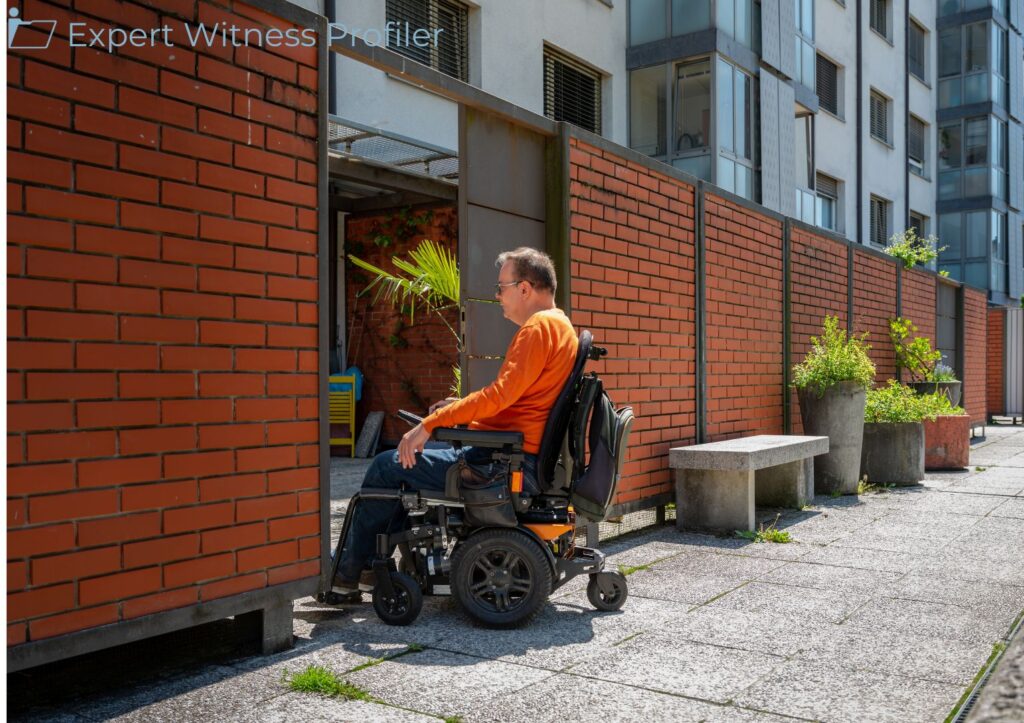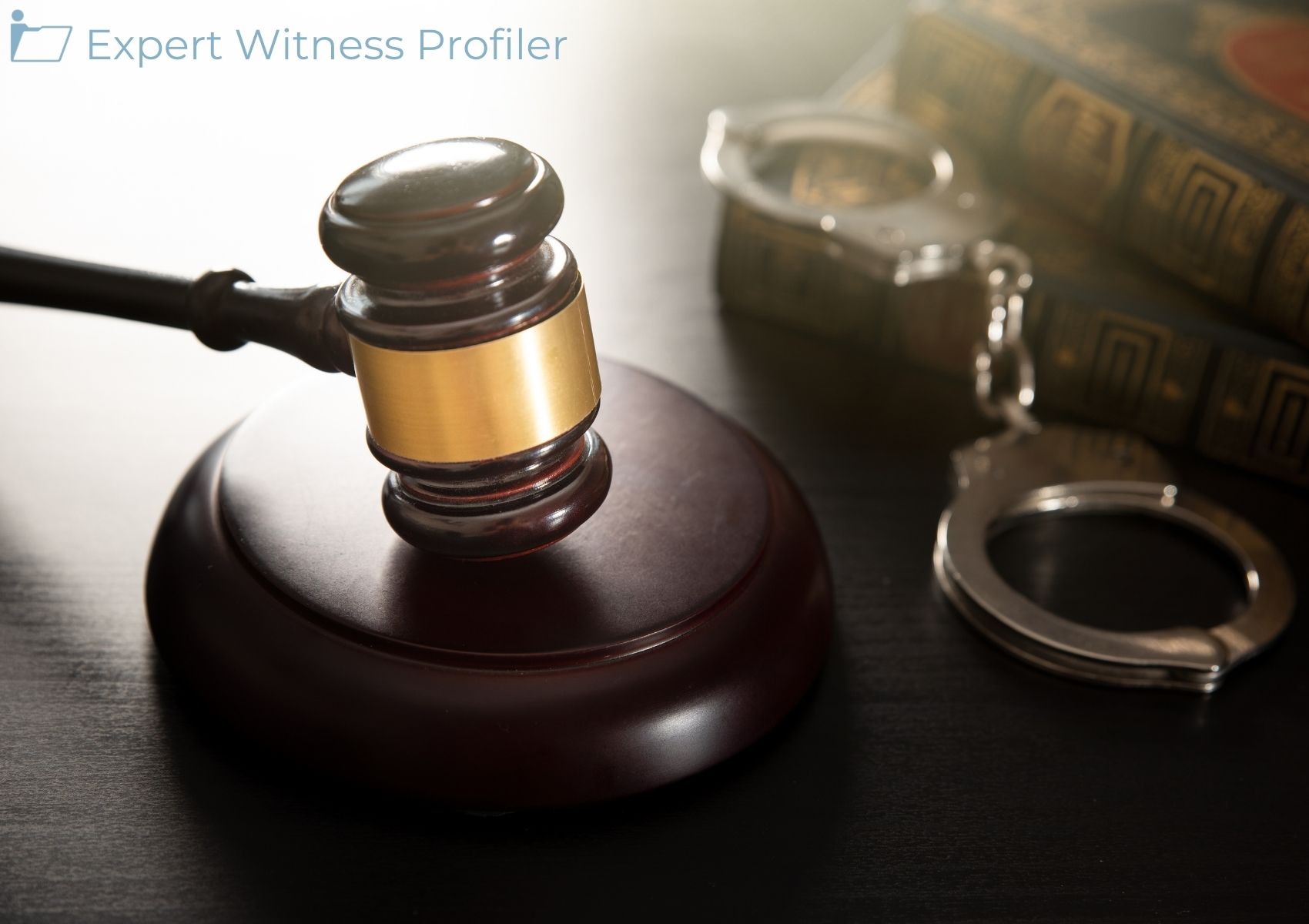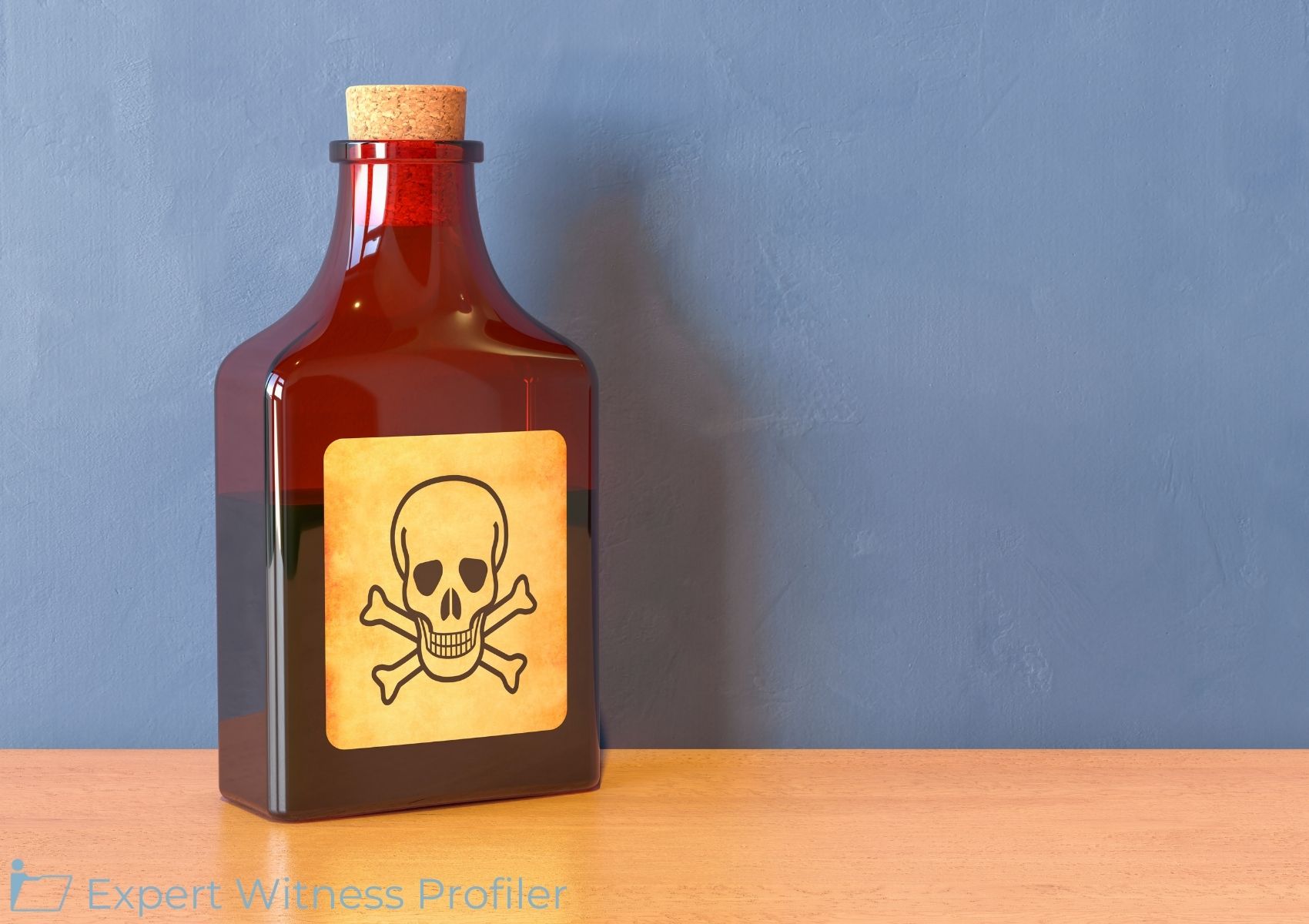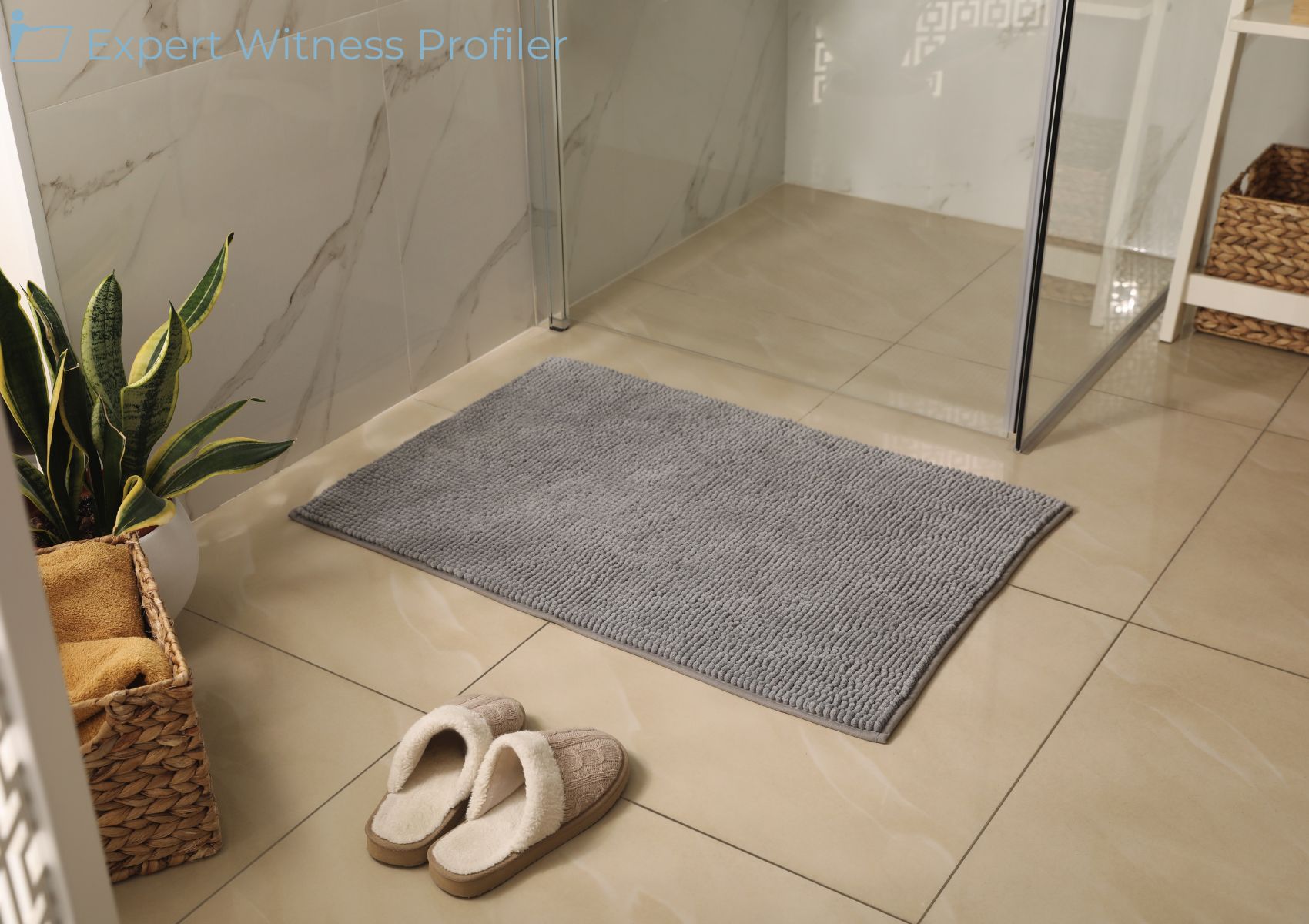Forensic Engineering Expert Witness’ Evaluation of the Safety Procedures Partly Excluded
Posted on October 21, 2024 by Expert Witness Profiler
It all started when Lewis Youngman fell from his motorized wheelchair while driving on the entry gangway of the Defendant’s cruise ship, Mariner of the Seas. Youngman alleged that, as a result of Defendant’s negligence, a certain portion of the gangway was impermissibly steep, uneven, and mis-leveled. Consequently, Youngman argues, the uneven flooring caused his wheelchair to tip over. This alleged negligence then resulted in severe injuries.
Defendant sought to strike some of this expert testimony from Plaintiff’s expert witness, Frank Fore, and Plaintiff’s hybrid witnesses, Timothy Carter, M.D., and Mark Fulton, M.D. As to Fore (an engineer), Defendant sought to strike his opinion that Plaintiff would not have been ejected from his motorized wheelchair were it not for the impermissibly steep incline of the gangway. Additionally, Defendant sought to strike Fore’s testimony that, had one of Defendant’s crewmembers more appropriately assisted Plaintiff, in accordance with Defendant’s own internal policies, Plaintiff’s incident would not have occurred.
Further, Defendant sought to strike Plaintiff’s treating physicians, Carter and Fulton, for Plaintiff’s allegedly insufficient pretrial disclosure. Alternatively, if the Court deems Plaintiff’s disclosures to be sufficient, Defendant moved to strike certain testimony from Carter on reliability grounds.

Forensic Engineering Expert Witness
Frank A. Fore is a forensic engineer, his specialties include vessel dynamics, kinematics, and accident reconstruction; occupant and pedestrian biomechanical dynamics, kinematics and injury analysis, tribology and the engineering of interacting moving surfaces, including the study of the co-efficient of friction, lubrication, and wear.
Neurosurgery Expert Witness
Mark Fulton is a Board-Certified Diplomat by the American Board of Neurological Surgery and is a fellow American Association of Neurological Surgeons, who specializes in both complex spinal and intracranial surgery. He received his medical degree from University of Utah School of Medicine and served both a Residency program and a Surgical Critical Care Fellowship at the Ohio State University Hospitals.
Neurology Expert Witness
Timothy D. Carter is a Board-Certified Diplomat by the American Board of Neurology, who specializes in neurology, internal medicine, and clinical neurophysiology. He received his medical degree from University of Florida School of Medicine and completed a year of internal medicine residency at the University of Virginia affiliated programs. His neurology residency and clinical neurophysiology fellowship were completed at the Medical University of South Carolina where he was also Chief Resident.
Discussion by the Court
Frank Fore
Fore opined in his report that:
“Plaintiff would not have been ejected and injured had his mobility scooter not abruptly tipped over on the gangway’s steep slope … or if the Gangway and Transition Plate had not exceed[ed] the mandatory maximum slope requirements as set forth in the Americans with Disabilities Act and the Florida Building Code, inter alia.”
Defendant argued that this conclusion is inadmissible because Fore did not engage in sufficient—or indeed any—testing before reaching this conclusion. Specifically, Defendant avers that Fore had no information regarding the make or model of Plaintiff’s motorized wheelchair (which Fore mistakenly referred to as a mobility scooter throughout his report); did not know how much the wheelchair weighed; did not know how much Plaintiff weighed; did not know how many wheels the wheelchair had; did not consider, or even know, the speed at which the wheelchair was traveling; and lacked understanding of other important details before drawing his conclusion. Defendant also pointed out that Fore did no experiments or other tests before arriving at his conclusion.
Fore made no effort to gather pertinent facts before concluding that the slope of the gangway was the cause of Plaintiff’s injury
The Court held that Fore’s conclusion is borne almost entirely of “anecdotal experience or speculation.” Fore offered no awareness of any facts specific to Plaintiff’s situation, let alone that he considered those facts in his opinion. Specifically, Fore’s opinion is untethered to critical facts such as the speed at which Plaintiff was traveling, the assistive device in which Plaintiff was traveling, the weight at which Plaintiff was traveling, or other details which would be necessary to render a reliable, non-speculative methodology. To the contrary, Fore’s opinion is based entirely on the theory that the gangway appeared to him to be improperly sloped, juxtaposed against videos of other people ostensibly falling on the gangway. The Court “concluded that there is simply too great an analytical gap between the data and the opinion proffered.”
However, Plaintiff missed the operative purpose for which this testimony was offered: “Defendant’s conformity to industry safety standards.” Here, Defendant has wisely opted not to challenge the portion of Fore’s testimony that opines on whether the gangway conforms with industry standards. Given Fore’s stated experience and training, plus his review of the basics of the record in the case, the Court held that this conclusion does fall within the Daubert reliability standard.
The Court held that Fore’s opinion rests too strongly upon speculation, such that it is unreliable under Daubert and its progeny. And because Fore’s speculation-laden testimony that the allegedly improperly-sloped gangway was the but-for cause of Plaintiff’s injuries lacked legal reliability, the Court granted Defendant’s motion to strike that portion of Fore’s testimony.
However, the Court refused to strike Fore’s testimony that “certain building codes and guidelines or regulations were arguably applicable to the subject gangway and that any alleged deficiencies with the subject gangway may have contributed to Plaintiff’s incident.”
Fore may not, however, testify that Plaintiff’s “mobility scooter would not have tipped over” had Defendant complied with its policy
Defendant sought to strike the portion of Fore’s report that Plaintiff’s “mobility scooter would not have tipped over had an RCCL crewmember assisted [Plaintiff] as required by RCCL internal policies ….”
The Court decided that Fore may testify as to whether, in his opinion, Defendant complied with its own internal policies. Indeed, courts have held that it is not a legal conclusion to analyze a party’s actions against its internal policies, and to determine whether the party complied with those policies.
The Court held that Fore may not, however, testify that Plaintiff’s “mobility scooter would not have tipped over” had Defendant complied with its policy. This testimony certainly rings again of an ultimate legal conclusion; i.e., that Defendant’s alleged failure to comply with its policy was the but-for cause of Plaintiff’s injuries. Thus, this portion of Fore’s anticipated testimony is inadmissible as it is purely a legal conclusion.
Challenges as to the Disclosure of Mark Fulton and Timothy D. Carter
Mark Fulton and Timothy D. Carter are hybrid witnesses pursuant to Federal Rule of Civil Procedure 26(a)(2)(C). Both are treating physicians of the Plaintiff, who will offer opinions within their areas of expertise, as disclosed below, but who need not provide a written report.
In addition to no reports being disclosed, Defendant argued that Plaintiff’s description of the testimony was also vague. That description is as follows:
“The Plaintiff’s medical condition related to the injuries that the Plaintiff sustained as alleged in the Complaint, including Plaintiff’s current medical symptoms, past and future medical and surgical condition and treatment, injury causation, aggravation of injuries and preexisting conditions due to the subject incident, diagnosis, prognosis, permanency, disability, and impairment, … the reasonableness of the costs and necessity of the medical care and treatment that was performed on the Plaintiff and the nature and estimated cost of future necessary medical and treatment for the Plaintiff.”
While the Court doubted whether the disclosure’s description is sufficient, the Court readily found that the ample time to depose the expert witnesses cured any ostensible prejudice.
Challenges as to Carter’s Anticipated Testimony
Defendant lodged substantive challenges to Carter’s proffered testimony.
Carter is a neurologist who has been treating Plaintiff since 2017. In 2019, Carter seemed to indicate that Plaintiff was experiencing neurological issues, and in 2021 essentially reaffirmed Plaintiff’s 2019 condition. On August 21, 2022, Plaintiff experienced his fall, and on September 7, 2022, underwent neck surgery. Eight months after Plaintiff’s fall, in May 2023 (and again in June 2023), Plaintiff had a visit with Carter. At that point, Carter seemed to notice marked differences in Plaintiff, including significant declines in his “mental and cognitive status,” his “speech and language,” his “attention and concentration,” and other mental faculties. Now, Carter seeks to testify that “more likely than not … the confluence of events together [i.e., Plaintiff’s fall and subsequent surgery] certainly contributed to some degree of deterioration.”
Defendant argued that Carter’s causation opinions should be excluded because Carter relied too heavily on temporal proximity and failed to rule out other factors causing Plaintiff’s neurological demise. Specifically, Defendant argued that Plaintiff, per Carter, was beginning to experience decline before Plaintiff’s fall; that imaging showed Plaintiff’s brain was already losing size and blood flow; that Carter failed to rule out that Plaintiff’s recurring urinary tract infections, as well as opioid and cannabis use, contributed to Plaintiff’s cognitive decline; that Carter could not determine that Plaintiff’s cerebral fluid issues were caused by the fall; and that Carter could not connect Plaintiff’s bowel and bladder incontinence to the fall.
Defendant’s Unpersuasive Challenges to Carter’s Opinions are Meritless
Carter bases his findings on a years-long relationship with Plaintiff, myriad neurological testing over those years, unchallenged qualifications in neurology, Plaintiff’s accident and surgery, and observations based on those years of visiting with Plaintiff to conclude that “the confluence of events together certainly contributed to some degree of deterioration.”
The Court held that it suffices to pass muster under Daubert, regardless of whether Carter directly ruled out every other cause of Plaintiff’s sudden neurological decline, or in part considered temporal proximity.
And to the extent that Defendant challenged the certainty of Carter’s findings (i.e., that “the confluence of events” contributed to “some degree of deterioration”), the Court decided that the Defendant is entitled to draw out Carter’s certainty before the jury via cross-examination. But such an argument goes to the weight, not the admissibility, of Carter’s testimony.
Held
- The Court granted Defendant’s motion to strike Frank Fore’s testimony that the allegedly improper gangway slope was the primary or but-for cause of Plaintiff’s injury (or in other words the accident would not have happened but for the slope).
- The Court denied Defendant’s motion to strike Fore’s testimony that Defendant failed to comply with its internal policies.
- The Court granted Defendant’s motion to strike Fore’s testimony that Defendant’s failure to comply with its internal policies is the primary or but-for cause of Plaintiff’s injuries (or in other words the accident would not have happened had Defendant followed its internal policies).
- The Court held that any deficiency in Plaintiff’s disclosures of Mark Fulton and Timothy Carter will be cured so long as Plaintiff makes Fulton and Carter available for deposition within twenty days of this Order.
- The Court denied Defendant’s substantive motion to strike the testimony of Carter.
Key Takeaways:
- Defendant persuasively challenged the reliability of the methodology Fore employed to go a step further to conclude that the ostensibly-improper gangway was the but-for cause of Plaintiff’s injurious ejection. An ultimate causation opinion goes a great deal further than simply an opinion that industry standards were not followed. A causation opinion must be supported by greater analysis and investigation.
- Fore’s testimony that “certain building codes and guidelines or regulations were arguably applicable to the subject gangway and that any alleged deficiencies with the subject gangway may have contributed to Plaintiff’s incident” certainly falls within his expertise and experience. And the work he undertook to reach that more limited opinion is sufficient for Daubert purposes.
Case Details:
| Case Caption: | Youngman V. Royal Caribbean Cruises Ltd. |
| Docket Number: | 1:23cv21796 |
| Court: | United States District Court, Florida Southern |
| Order Date: | September 2, 2024 |





